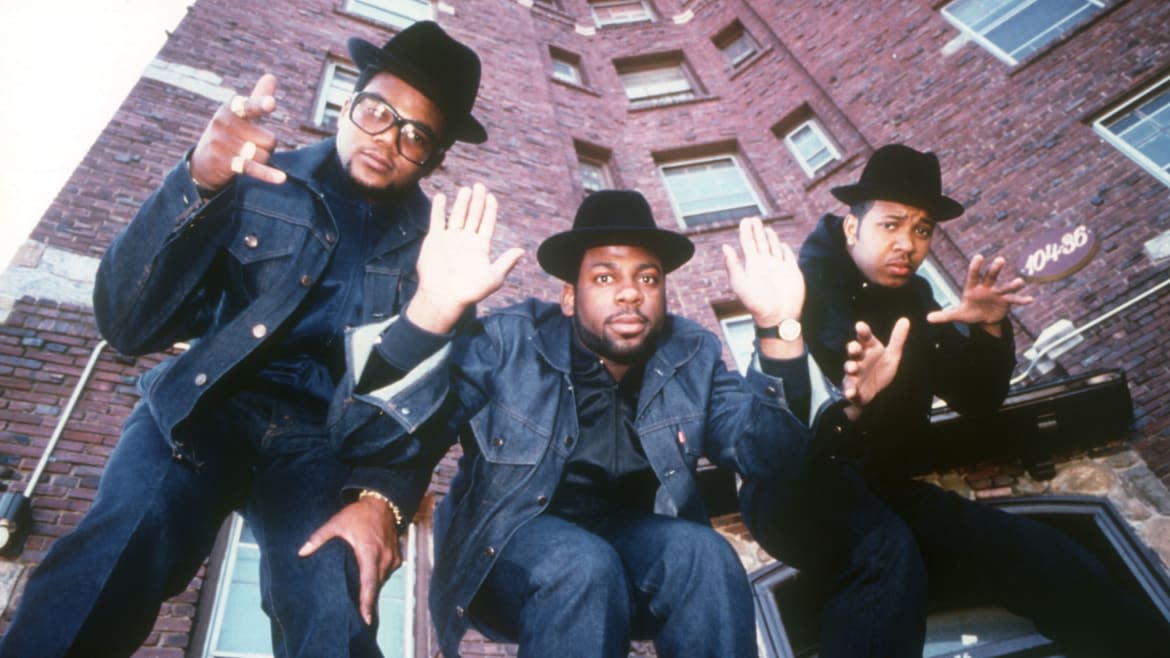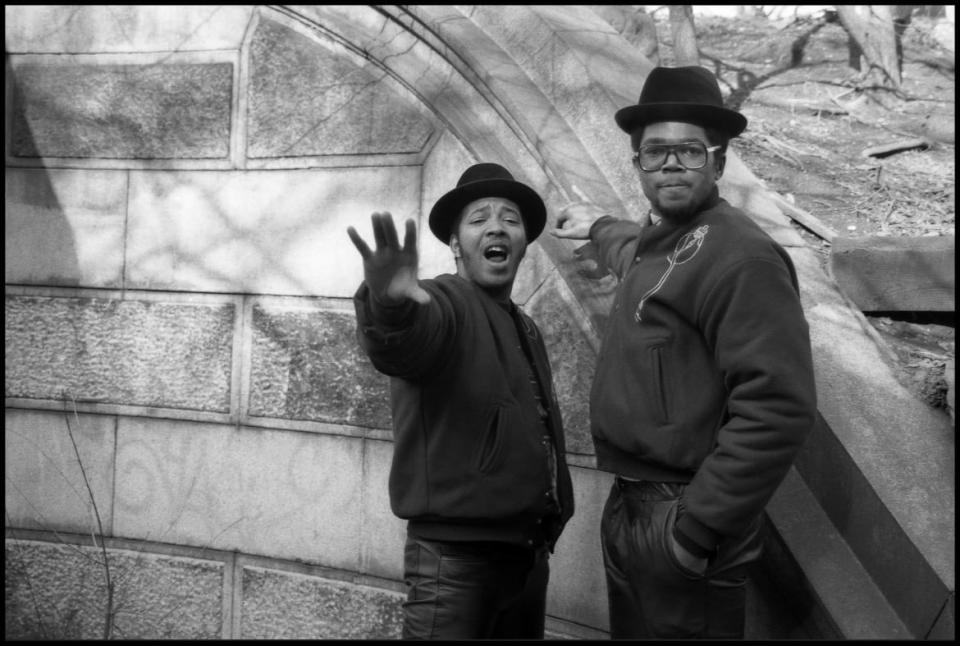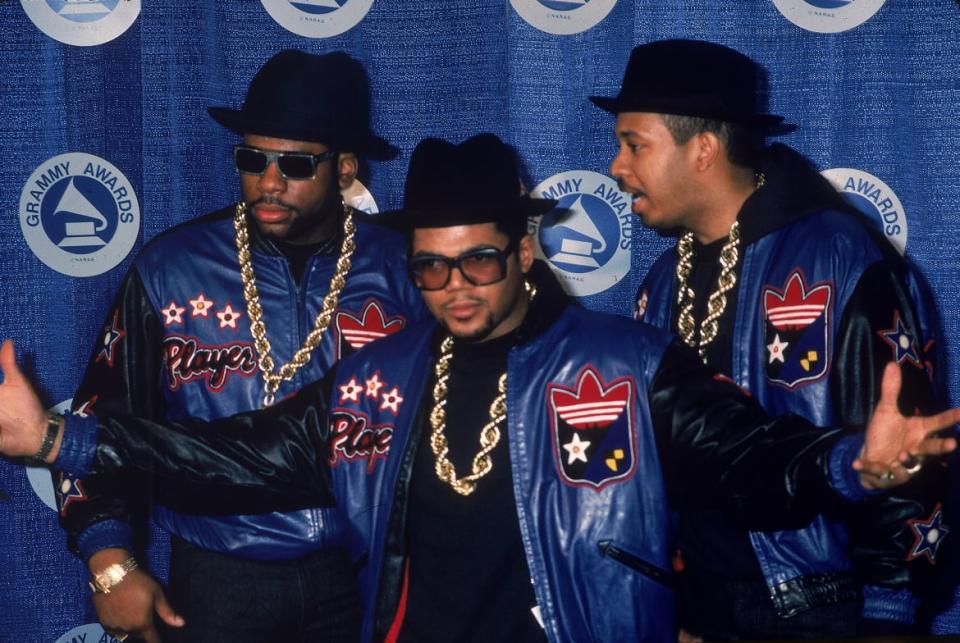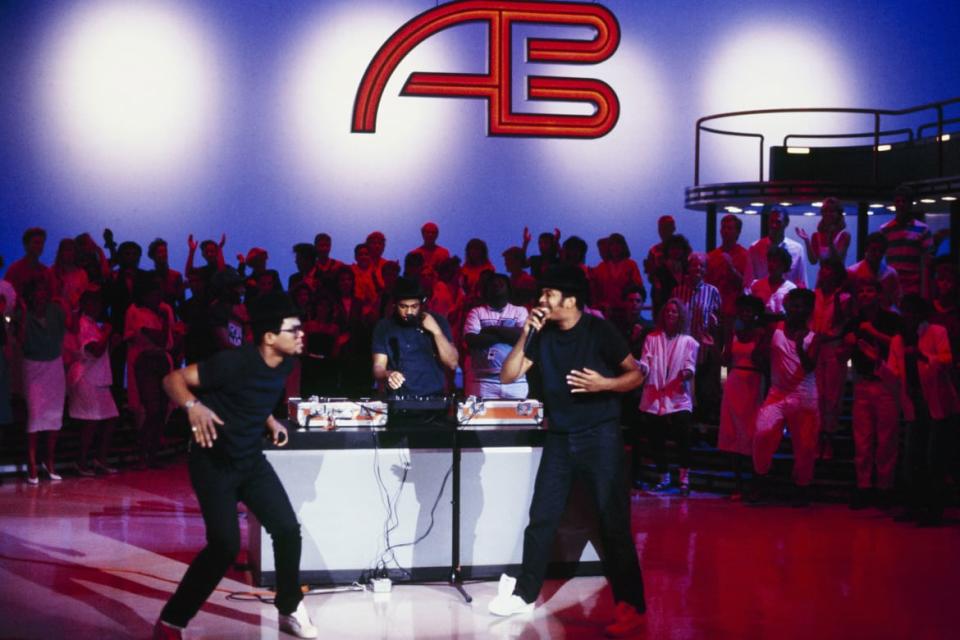The Rebellious Rap Debut That Disrupted ‘Safe’ Black Culture

- Oops!Something went wrong.Please try again later.
- Oops!Something went wrong.Please try again later.
- Oops!Something went wrong.Please try again later.
- Oops!Something went wrong.Please try again later.
Hip-hop has no shortage of game-changing debuts. In 1989, De La Soul’s 3 Feet High and Rising announced the emergence of a quirky nerd rap sensibility just as the world was discovering gangsta rap; 15 years later, Kanye West’s The College Dropout announced a shift away from street hop toward hipster rap aesthetics. And long before those, the self-titled first album from Queens legends Run-D.M.C. marked the dawn of hip-hop’s mainstream takeover. As such, Run-D.M.C.—which celebrated its 40th anniversary this week—was the beginning of an expansion on the idea of what it meant to be Black in the 1980s; an opening for street kids to assert themselves and insert their world into American popular culture.

Run DMC's Joseph "Run" Simmons and Darryl "D.M.C." McDaniels pose in Central Park, New York, 1984.
Run-D.M.C. had been born out of the ambitions of Joey “DJ Run” Simmons, younger brother to rap promoter Russell and early understudy to the legendary Kurtis Blow. After a stint as Blow’s kid DJ (known as “DJ Run, Son of Kurtis Blow”), Run convinced his brother to help him record his own demo for a song called “Street Kid.” He recruited neighborhood friend Darryl McDaniels to be his rhyme partner, and after they started rapping together in their hometown of Hollis, Queens, they met an aspiring DJ in Jason Mizell (who would later go by Jam Master Jay). With the elder Simmons now pushing the trio he’d dubbed “Run-D.M.C.,” they landed a deal with Profile Records and released their debut double-release single “It’s Like That/Sucker MCs” in late 1983. Lauded as the dawning of rap’s first “new school,” that hit instantly set anticipation for their first LP.
The debut album from Run, Dee, and Jam Master Jay was a recalibration of rap music: What had previously been a singles-driven genre defined by mostly party songs was moving into more album-focused, sonically hard-hitting territory. Larry Smith’s production was dark and aggressive compared to the disco sounds of earlier rap hits like The Sugarhill Gang’s “Rapper’s Delight,” and the subject matter took its cues from Grandmaster Flash and the Furious Five’s classic commentary track “The Message.” “Rock Box” announced the trio as genre-bending innovators (a full two years before “Walk This Way,” their chart-busting collaboration with Aerosmith) and Jam Master Jay lionized the group’s soon-to-be legendary turntablist. “It’s Like That” dropped like an atom bomb; a sinister slice of Smith-produced sonic doom that made it clear that hip-hop was entering a new day.
“It showed that we had the big gold chain and the fancy car and that we were truly the superstars of the neighborhood, you know,” D.M.C. recalled to NPR’s Terry Gross last year. “’Cause if you got a big chain and the other guy don’t, you must be doing something. And, you know, it also brought a bad image to us because people that didn’t know Run-D.M.C. before we had an album cover out thought we was just drug dealers because most of the drug dealers was wearing chains like that and driving in big cars, even before the rappers made it big.”
Run-D.M.C. wasn’t the first major rap release of its era—six months earlier, the Brooklyn trio Whodini released their self-titled debut. But unlike Whodini, whose popularity would remain largely confined to the R&B charts, Run-D.M.C. would land on the Billboard 200 album chart en route to gold commercial status. It put the group on MTV, as the hard guitar licks of “Rock Box” were a natural fit for the still rock-driven network’s video rotations. It put Run-D.M.C. at the forefront of a cultural zeitgeist, and it saved rap music from the realm of novelty.

American rap group Run DMC pose at the Grammy Awards in 1988.
“Before us,” Jam-Master Jay told Spin in 1986, “rap records was corny. Everything was soft. Nobody made no hard beat records. Everybody just wanted to sing, but they didn’t know how to sing, so they’ll just rap on the record. There was no real meaning to a rapper. [Afrika Bambaataa] and them was getting weak. Flash was getting weak. Everybody was telling me it was a fad. And before Run-D.M.C. came along, rap music could have been a fad.”
Further, the success of Run-D.M.C. set the stage for the rise of Def Jam Recordings. Although the group itself was never signed to the legendary label, their breakthrough led to Simmons and producer Rick Rubin launching their imprint with the 1984 single “It’s Yours” and landing a distribution deal with CBS Records. And the album cemented Smith as the foremost rap producer of the mid-1980s, with hits from the aforementioned Whodini and The Fat Boys also under his belt.
Jam Master Jay Murder Trial Ends in Conviction for Run-DMC DJ’s Godson and Childhood Pal
But Run-D.M.C.’s impact extended far beyond just musical spaces, breaking into American pop culture in a big way. About six months after the album dropped, The Cosby Show premiered on NBC, and would go on to become the most popular TV show of the decade, opening the gates for a wave of popular, family-friendly Black sitcoms. The weekly exploits of the Huxtable clan would be groundbreaking in its depiction of middle-class Black American lives, becoming a totem of sorts for the image of an upward-climbing post-Civil Rights generation of Black professionals. It’s understandable if one views The Cosby Show and Run-D.M.C. as diametrically opposed—the rap group that mainstreamed hip-hop by embracing the street sensibilities of Black culture versus a sitcom that became a phenomenon by rejecting those same sensibilities.

Run D.M.C. on American Bandstand in 1985.
At a time when so much of Black popular culture would be driven by a sense of safe accessibility, Run-D.M.C. led a wave of rap renegades whose look and sound seemed to be an affront to a generation embracing the suit-wearing sensibilities of then-contemporary R&B and the universal appeal of popular artists like Michael Jackson and Lionel Richie. The menace that some associated with Run-D.M.C.’s thunderous beats, fedoras, and non-smiling album cover was more implied than anything else, but it was a staunchly rebellious presentation at a time when “crossing over” was high currency.
All Our ’80s Heroes Are Zeros: From Cosby to Hulk Hogan, a Generation Which Will Live in Infamy
In the landscape of aspirational ’80s Black pop culture, Run-D.M.C.’s debut brought urban aesthetics to the mainstream. It was a harbinger of rap’s rise in the second half of the decade, but more importantly, it highlighted a side of Blackness that wasn’t beholden to respectability. Revisiting it 40 years later, it’s clear that their debut altered Black pop culture in the 1980s while also announcing hip-hop’s mainstreaming—though Run-D.M.C. themselves knew all along how massive it would be.
“I knew it was going to be a culture shock,” Run said in 2018. “I knew it was more than just music with what we were coming with. It was the attitude, fashion, and the hip-hop coming together with something bigger.”
Get the Daily Beast's biggest scoops and scandals delivered right to your inbox. Sign up now.
Stay informed and gain unlimited access to the Daily Beast's unmatched reporting. Subscribe now.

